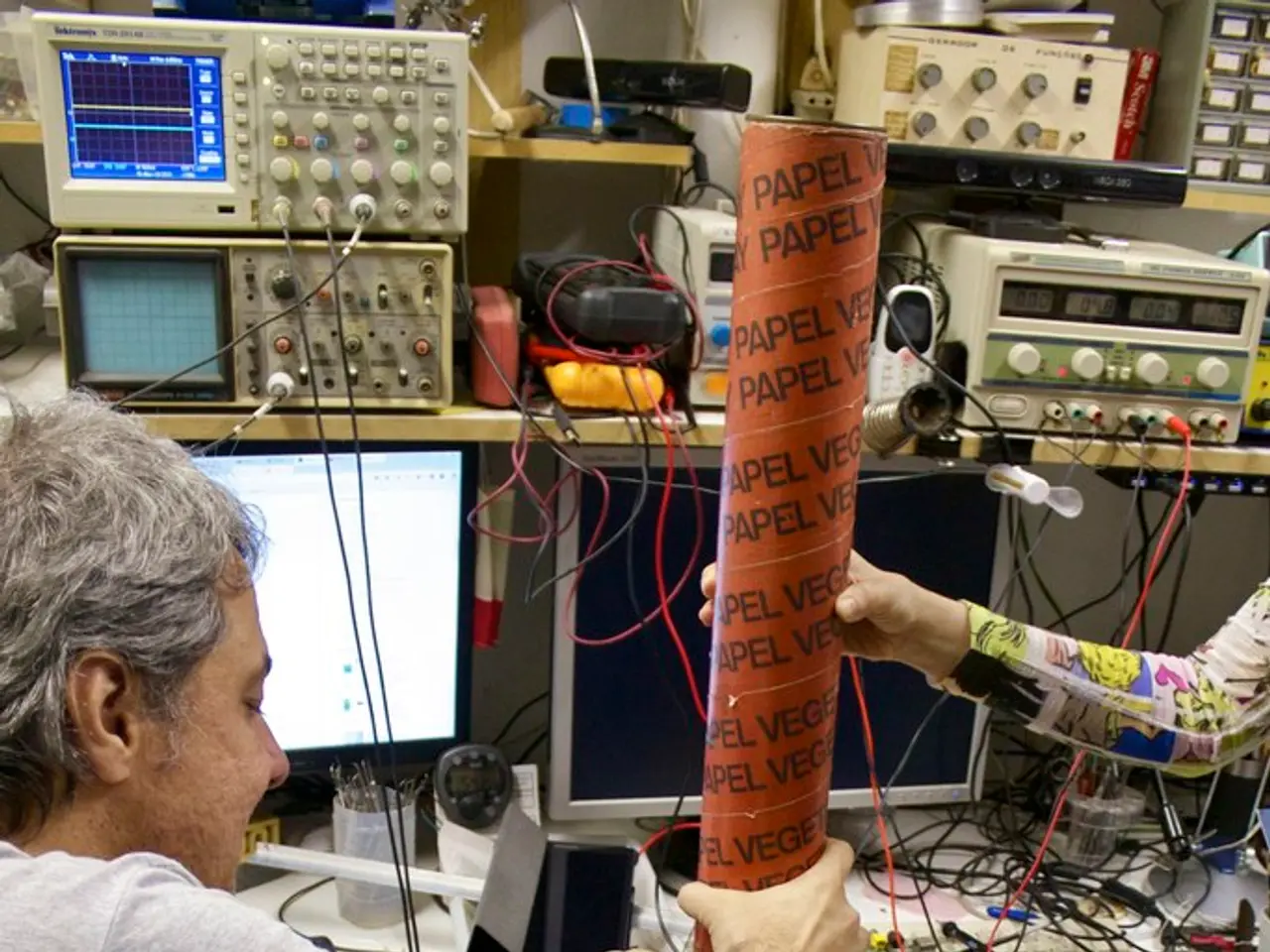Detection of Thermal Discomfort through Bio-Sensing Technology by Analyzing Muscular Movements for Non-Invasive Relief
In a groundbreaking study, researchers have employed a unique combination of Shimmer sensors, artificial intelligence (AI), and machine vision algorithms to enhance non-invasive thermal discomfort detection in office settings.
During the experimental period, a total of 1080 indoor comfort evaluation surveys were held. The Shimmer sensors, worn by participants, captured physiological signals indicative of thermal stress, such as skin temperature changes and electrodermal activity. This raw data was then processed by AI models, which analysed these signals in context, taking into account individual variability and environmental factors.
The study, conducted at the Zero Emission Building (ZEB) Test Cell laboratory in Trondheim, Norway, aimed to create a comprehensive database of biomarkers linked to the subcortical level of the brain, indoor parameters, and occupant comfort levels in an office-like environment.
The data collection campaign saw a total of 111 sessions registered with the platform software. The software, equipped with built-in machine vision algorithms, collected facial action data through facial muscle movement detection and various biomarkers.
A post-processing tool called Affectiva AFFDEX was also utilized in the study. Notably, the ZEB laboratory was transformed to mimic an office space for the data collection phase.
The discomfort button, pressed by participants to indicate their thermal comfort levels, was pressed a total of 240 times during the experiment. Of these presses, 49 indicated low temperature discomfort, and 52 signalled high temperature discomfort.
The collected data showed significant deviation in discomfort temperature values among participants. This deviation was observed during the temperature ramps, suggesting that a single predefined temperature range may not be sufficient for facility management.
The implementation of this AI-driven approach could potentially provide higher accuracy and enable personalized user experiences at the workplace. By offering non-invasive continuous monitoring, multimodal physiological integration, adaptive AI analysis, and real-time feedback, this solution promises to improve occupant comfort and productivity in office environments.
While specific studies on this exact combination in thermal discomfort are still emerging, the multimodal sensor + AI framework has proven effective in related contexts such as stress and depression detection through physiological signals. This underscores its potential for thermal comfort applications as well.
In summary, the integration of biometrical data from Shimmer sensors with advanced AI algorithms offers a sophisticated, scalable, and user-friendly solution for detecting thermal discomfort in office environments non-invasively.
- The integration of Shimmer sensors, artificial intelligence, and machine vision algorithms, together with facial coding and health-and-wellness biomarkers, promises to develop a more comprehensive thermal discomfort detection system in office settings.
- As this study demonstrates, the application of artificial intelligence and technology in health-and-wellness, like facial coding and thermal discomfort detection, can offer improved accuracy, personalized user experiences, and real-time feedback, revolutionizing the workplace productivity and occupant comfort.




